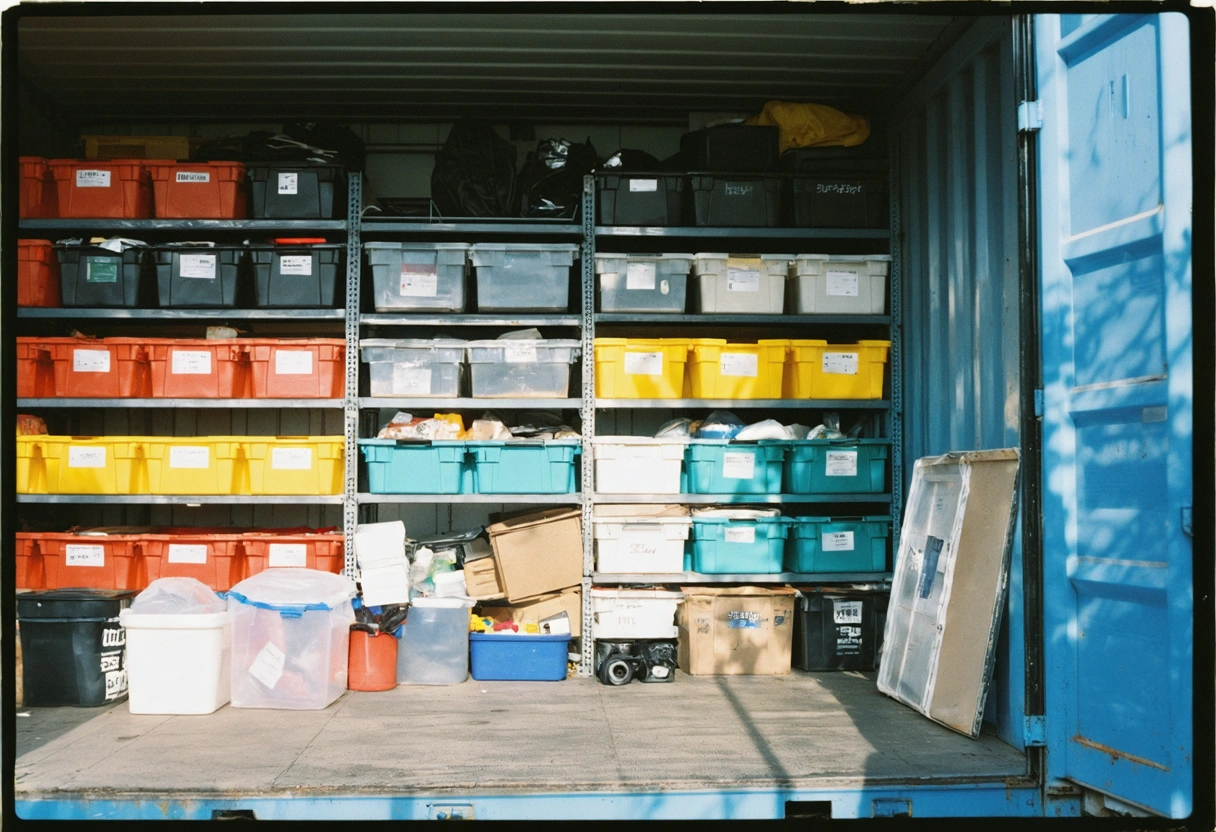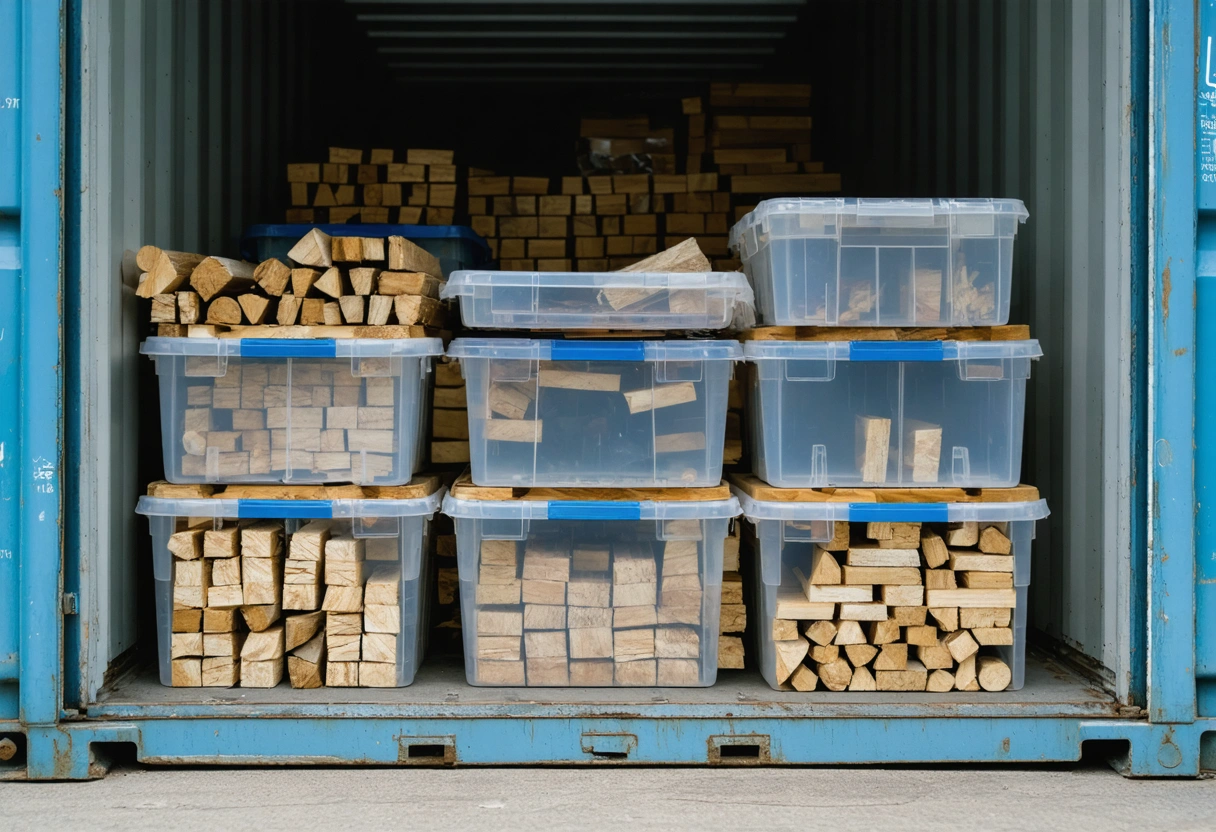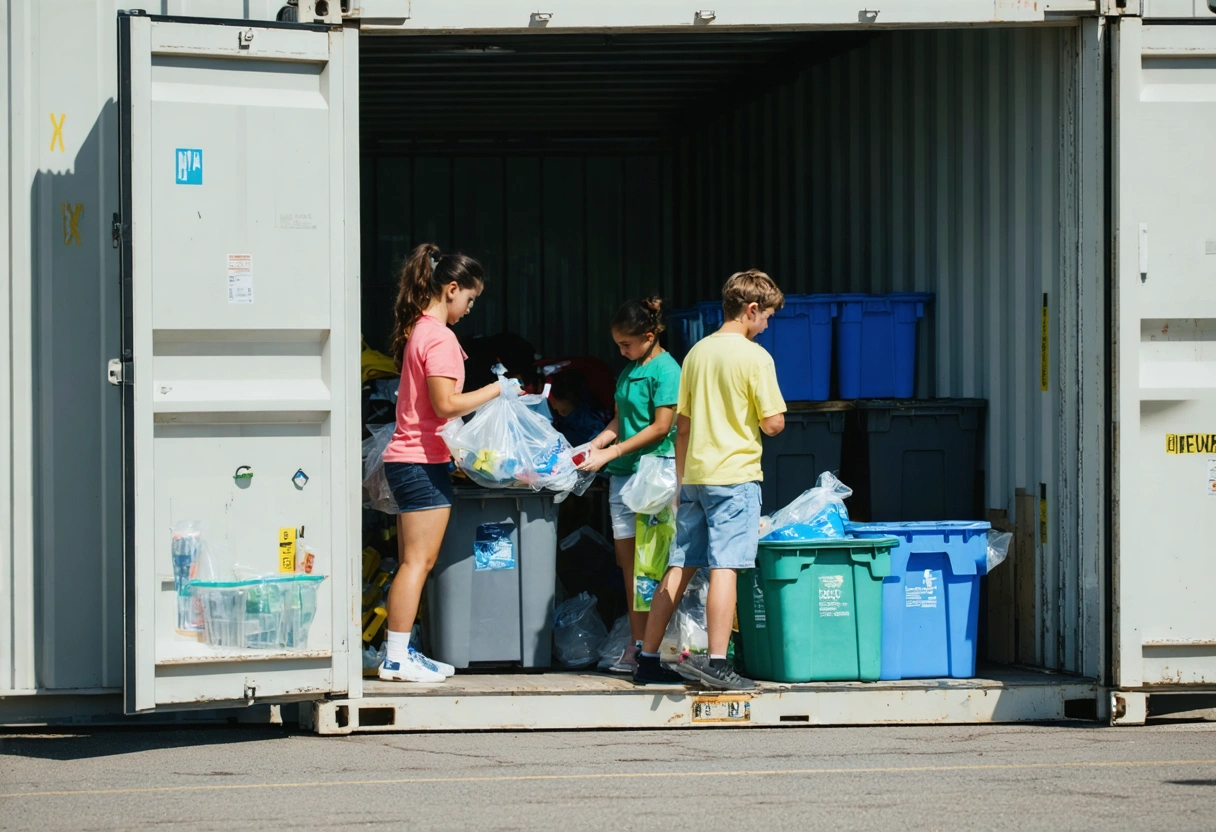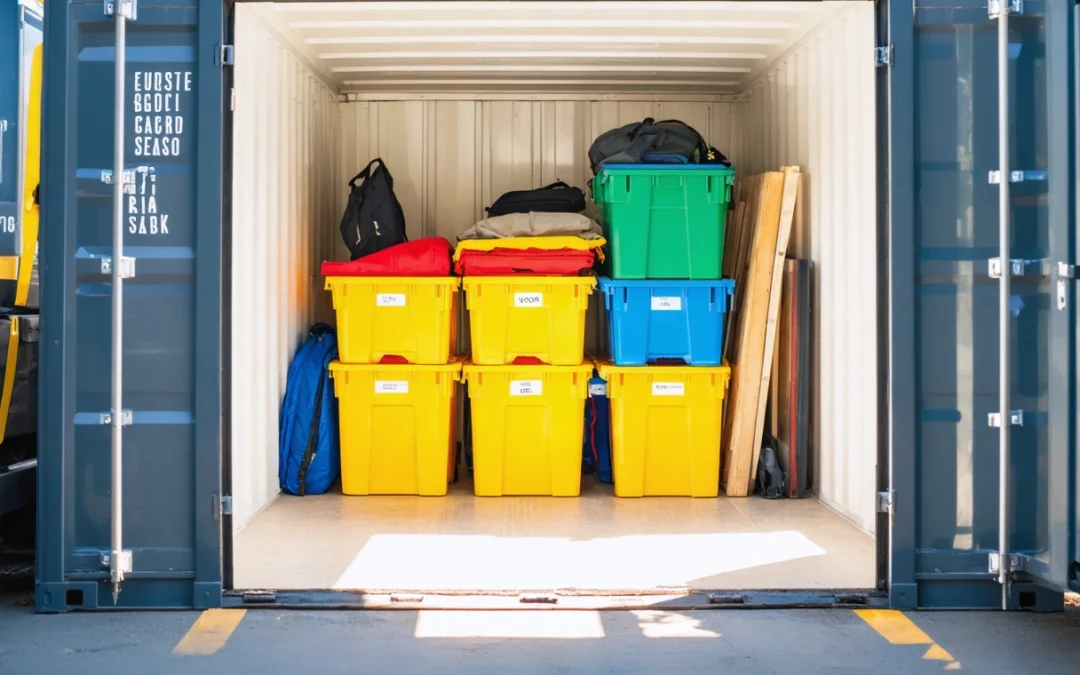Seasonal Storage Switch: How to Plan and Organize Your Self-Storage Unit for Every Season
Staying organized throughout the year can be a challenge, especially when the items you use frequently change with the seasons. Self-storage units offer a practical solution for managing seasonal belongings, but without a strategic approach, your unit can quickly become cluttered and inefficient. This guide dives deep into the art of the seasonal storage switch, equipping you with expert tips and actionable steps to plan and organize your self-storage unit for every season. Whether you are a seasoned organizer or new to self-storage, this comprehensive resource will help you maximize space, protect your valuables, and streamline access all year round.
Understanding the Importance of Seasonal Storage Organization
Seasonal storage is more than just shuffling boxes in and out of a unit. It is about creating a systematic approach to managing your belongings, ensuring that what you need is always accessible and protected. With the right organization, you save time, reduce stress, and extend the lifespan of your possessions. For families, sports enthusiasts, or small business owners, mastering seasonal storage can make a significant difference in day-to-day life.
According to the New York Times Guide to Cleaning and Organizing, a well-organized storage space minimizes clutter and helps maintain a clean and efficient household. By adopting a proactive approach to switching your storage every season, you also free up valuable space at home, making room for new activities and reducing potential safety hazards caused by overcrowding.
Planning Your Seasonal Storage Switch
The key to successful seasonal storage is thorough planning. This means anticipating what you will need in the coming months, evaluating your current unit layout, and preparing your items for safe, efficient storage. A well-thought-out plan streamlines the process, prevents damage, and makes every future switch easier.
Start by creating a detailed inventory of your seasonal items. List everything you plan to store or retrieve, such as holiday decorations, winter clothing, summer sports gear, or gardening tools. By tracking these items, you can avoid unnecessary duplication, identify what needs cleaning or repairs, and prioritize access based on upcoming needs.

Timing Your Storage Switch
Timing is critical when switching out seasonal items. Ideally, you should plan your switch during transitional periods, such as early spring and late fall. This allows you to beat the rush and avoid last-minute chaos. For example, transitioning to spring storage in late February or early March ensures that winter items are safely packed away before warmer weather activities begin.
It is also wise to monitor local weather trends and upcoming events when planning your storage switch. If you are storing items sensitive to temperature or humidity, such as electronics or antiques, consider using a climate-controlled unit. The Consumer Reports guide to choosing a self-storage facility explains why climate control is crucial for protecting valuables against damage from extreme temperatures and moisture.
Organizing Your Storage Unit by Season
Strategic organization is the backbone of an efficient storage unit. By grouping items by season and frequency of use, you create a system that makes it easy to find and rotate belongings. Consider dividing your unit into clear zones for each season: winter, spring, summer, and fall. Use shelving, labeled bins, and sturdy boxes to separate and protect items.
Place the current season’s items at the front of your unit for easy access. Items you will not need until later in the year can be stored toward the back or higher up on shelves. For instance, as summer ends, move winter sports equipment and holiday decorations forward, while shifting pool floats and camping gear to the rear.
Labeling and Inventory Management
Accurate labeling is essential for effortless retrieval. Invest in high-quality labels and waterproof markers, or consider color-coded bins for each season. List the contents of each box on the outside and keep a master inventory sheet, either printed or digital, for quick reference.

Digital inventory tools or apps can further streamline organization. These allow you to update your list with photos, locations, and notes on each item, making it easy to plan your next switch. For comprehensive recommendations on organizing and labeling, check out the Good Housekeeping guide to home organization.
Protecting Your Belongings Across Seasons
Seasonal changes can expose your stored items to temperature fluctuations, humidity, pests, and dust. Taking preventative measures preserves the quality and longevity of your belongings, ensuring everything is ready to use when you retrieve it.
Use breathable storage bags for clothing and textiles, as these prevent mildew and odor buildup. For delicate items like holiday ornaments or electronics, opt for padded containers and anti-static wraps. Wooden furniture should be cleaned, polished, and covered with moving blankets to avoid scratches and moisture damage.
Pest Prevention and Climate Considerations
Pests such as rodents and insects can wreak havoc on stored items. To minimize risk, avoid storing food or scented products, and use sealed plastic bins instead of cardboard boxes. Regularly inspect your unit for signs of infestation and consider natural repellents like cedar blocks or lavender sachets.
If your area experiences extreme temperature swings, climate-controlled units are a wise investment. These units maintain a stable environment, which is especially important for artwork, electronics, and sensitive documents. The National Archives’ preservation guidelines offer detailed advice on storing sensitive materials in fluctuating climates.

Efficient Packing Techniques for Seasonal Storage
How you pack your items is just as important as where you store them. Efficient packing maximizes space, reduces the risk of breakage, and makes the process of switching items in and out straightforward.
Begin by disassembling large items, such as furniture or exercise equipment, to save space and prevent damage. Wrap components in protective padding and keep all hardware in clearly labeled bags. Use vacuum-sealed bags for out-of-season clothing, compressing bulky items like coats and blankets to a fraction of their size.
Stacking and Space Maximization
Store heavier boxes at the bottom and lighter, more fragile items on top. Leave narrow pathways within your unit so you can access items without having to unload the entire space. Place frequently rotated items at the front and rarely used items in the back or on higher shelves.
Vertical space is often underutilized in storage units. Install sturdy shelving or racks to stack bins and boxes safely. For more tips on optimizing vertical storage, refer to the Real Simple article on vertical storage solutions.
Seasonal Storage Checklists: What to Store and When
Having a checklist for each season ensures nothing is overlooked and keeps your rotation process efficient. Here are examples of what to store and retrieve for each season:

- Winter: Holiday decorations, heavy blankets, winter clothing, snow sports equipment, snow blowers, and shovels.
- Spring: Gardening tools, lawn furniture, spring sports gear, light jackets, and rainwear.
- Summer: Beach gear, camping equipment, bicycles, pool accessories, summer clothing.
- Fall: Back-to-school supplies, autumn decorations, leaf blowers, rakes, and transitional clothing.
Update your checklists every season and cross-reference them with your inventory. This helps you identify items to repair or replace, and ensures nothing important is left behind. For a detailed guide on seasonal decluttering, visit the Apartment Therapy seasonal decluttering tips.
Donating and Disposing of Unused Items
Each seasonal switch is a perfect opportunity to assess what you truly need. Items that are no longer used or in good condition can be donated or responsibly disposed of. This not only frees up storage space but also supports sustainability and community organizations.
Check local donation centers for guidelines on accepted items, and remember to recycle or dispose of broken goods appropriately. This habit keeps your storage unit clutter-free and your belongings relevant each year.
Tips for a Smooth Seasonal Storage Switch
Transitioning your storage unit from one season to another can be stress-free with a few practical strategies. First, schedule your switch in advance and set aside enough time to thoroughly sort, clean, and organize your items.

Work with family members or roommates to divide tasks and make the process more efficient. Bring cleaning supplies to wipe down surfaces and remove dust or debris. Take this time to inspect your unit for any signs of moisture, pest activity, or structural issues.
Adapting Your Storage as Needs Change
Your storage needs may evolve over time due to lifestyle changes, growing families, or new hobbies. Regularly review your inventory and adjust your organization system to reflect your current priorities. If you find yourself repeatedly swapping the same items in and out, consider creating a “frequently used” section at the front of your unit.
Stay flexible and be willing to reconfigure your layout as your life changes. Investing in modular shelving, stackable bins, and clear containers will make it easier to adapt your storage to new seasons and activities.
Mastering the Seasonal Storage Switch
Organizing your self-storage unit for seasonal changes is a skill that pays off year-round. By planning ahead, maintaining a detailed inventory, protecting your belongings, and applying efficient packing and organization methods, you can ensure your seasonal storage switch is seamless and stress-free. Not only will you save time and money, but you will also enjoy greater peace of mind knowing your possessions are safe, accessible, and ready for use whenever you need them.
Embrace the process as an opportunity to declutter, refresh, and optimize your living space with each new season. With these expert strategies and resources, your self-storage unit will become a model of organization and efficiency, supporting your lifestyle no matter what the calendar brings.
Need help with Seasonal Storage Switch: How to Plan and Organize Your Self-Storage Unit for Every Season?


